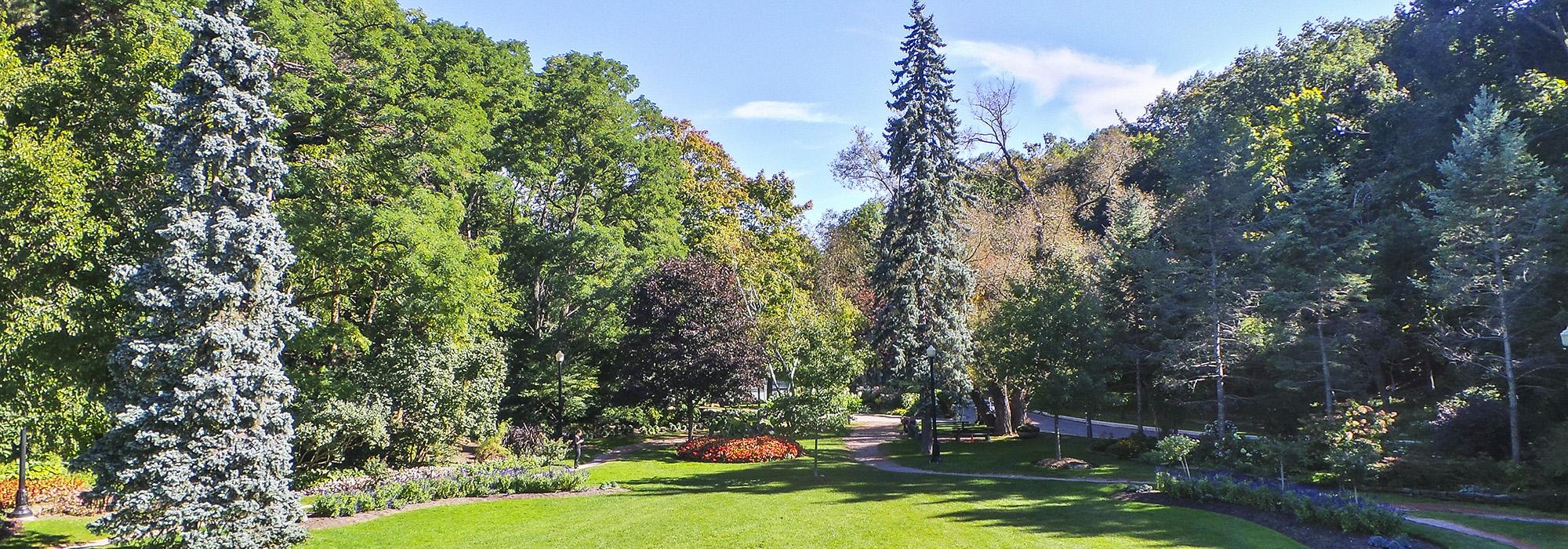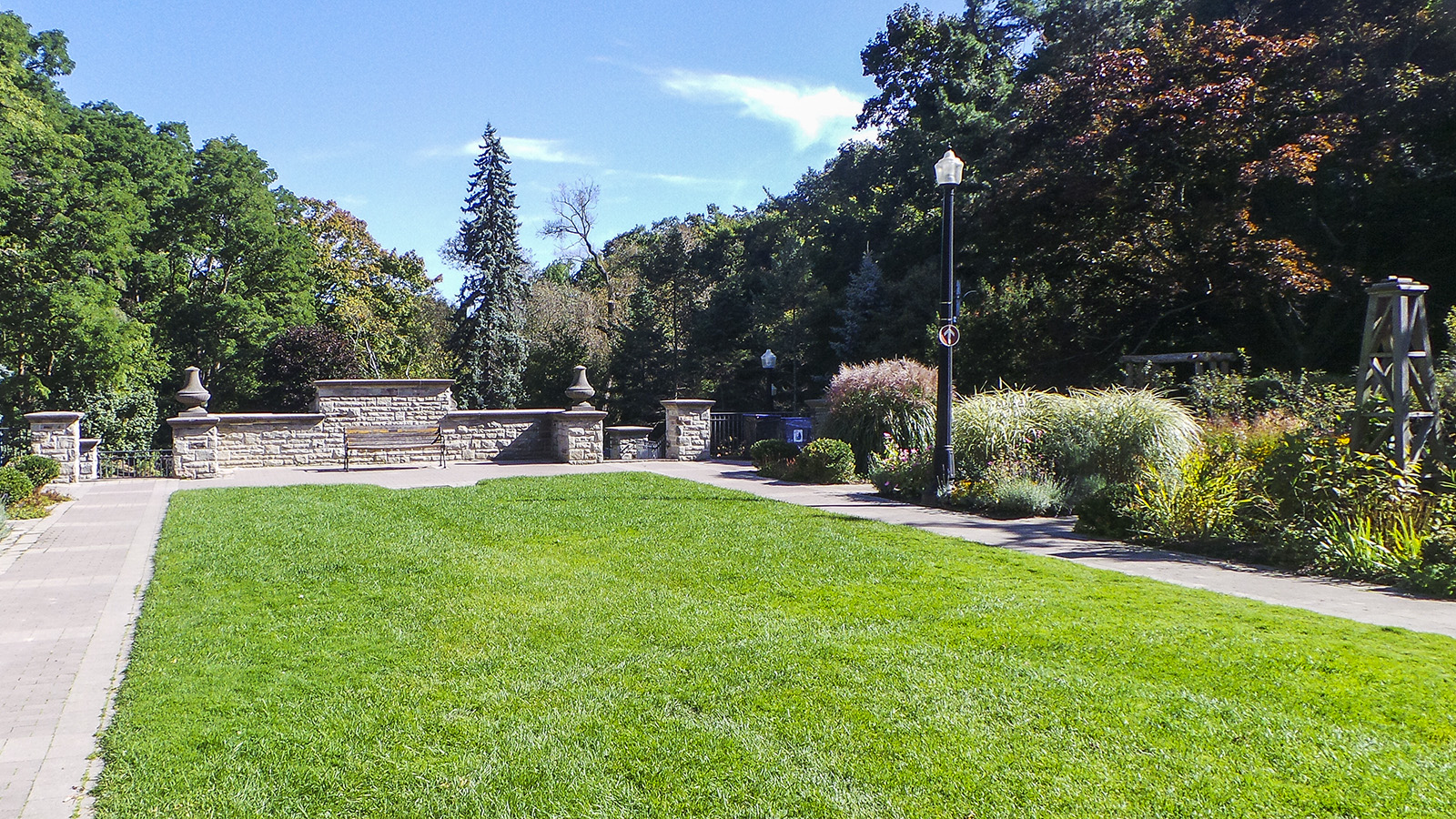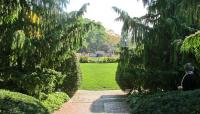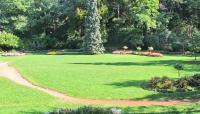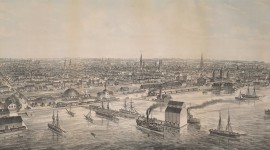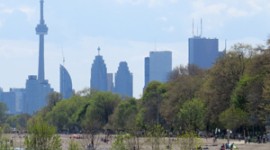Landscape Information
Designed by landscape architect Edwin Kay in preparation for Toronto’s centennial in 1934, these gardens were initially supported by public subscriptions and named to honor Alexander Muir, who in 1867 composed the patriotic song, “The Maple Leaf Forever.” Using the maple leaf as a theme, the gardens were originally located three kilometers south, near Mount Pleasant Cemetery, where Muir is buried; but in 1951 the construction of the Yonge Street subway impinged on the original site. With funding from the Toronto Transportation Commission, the gardens were then moved—the plantings and walls re-located to replicate Kay’s original design—to their present location in the affluent Garden Suburb of Lawrence Park, and re-dedicated in 1952.
The park is screened from the surrounding streets by perimeter trees. At the main entrance, on Yonge Street, a stone and wrought-iron gateway provides access through a hedge running parallel to the street. A brick path behind the hedge connects entrances at the north and south, while another leads southeastward through mature trees to two axial, terraced lawns, the second of which is flanked by eight perpendicular, formal garden beds and terminated by a monumental, stone terrace, whose southern façade mediates the descent to an irregular grassy expanse. Paths circulate throughout the park and provide alternate routes around the central gardens, whose formal symmetry is contained by mature trees. The park serves as the western gateway of the Discovery Walk, a network of scenic trails through Toronto’s natural ravines, which leads immediately to Blythwood Ravine Park on its southeastern border.



